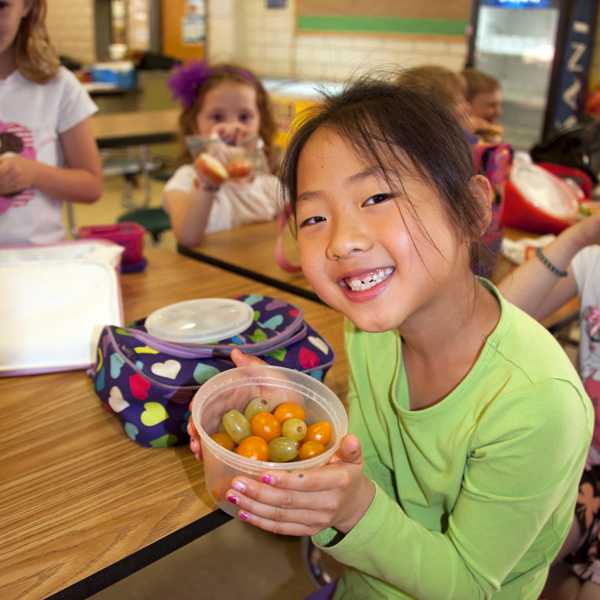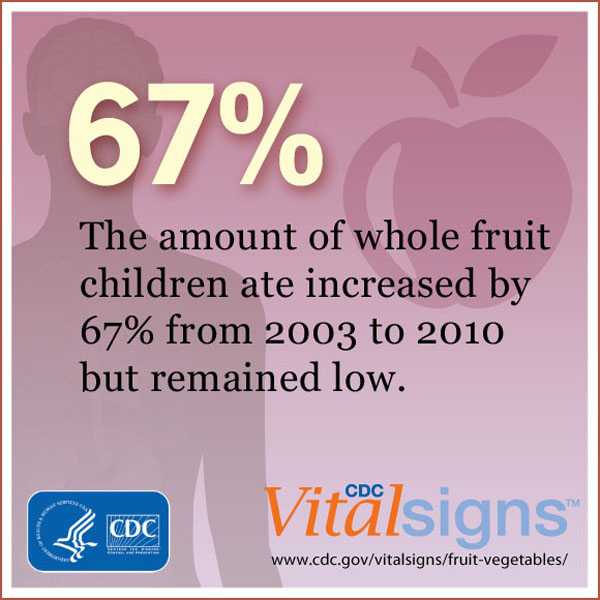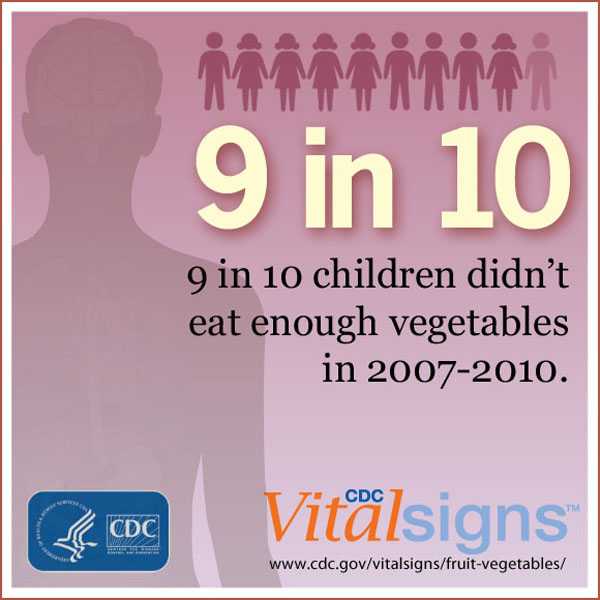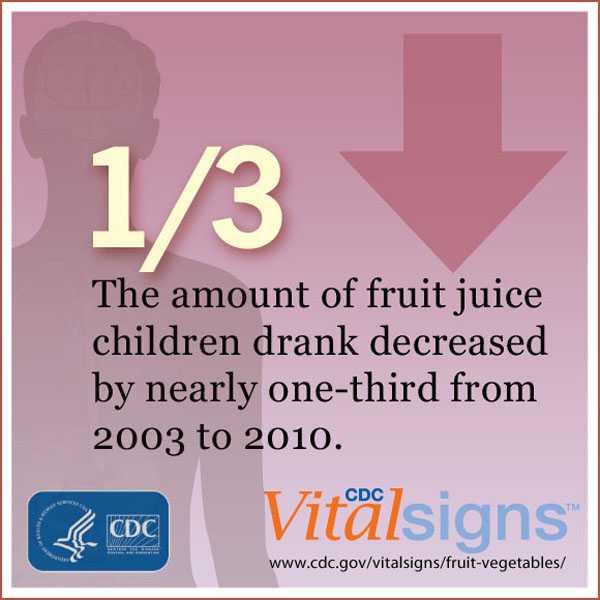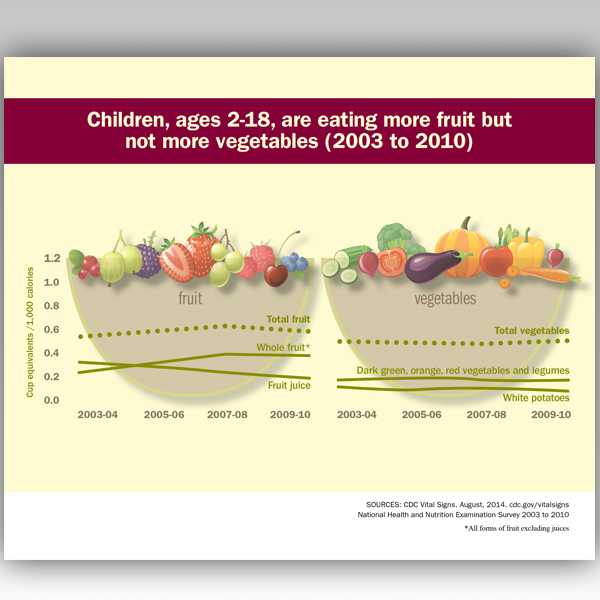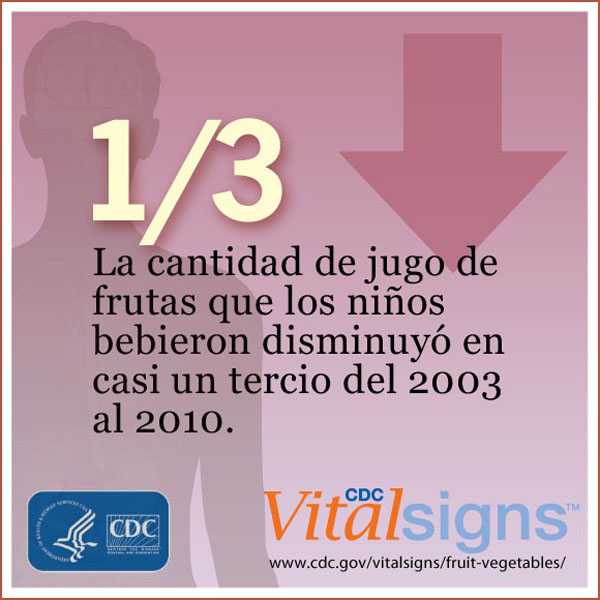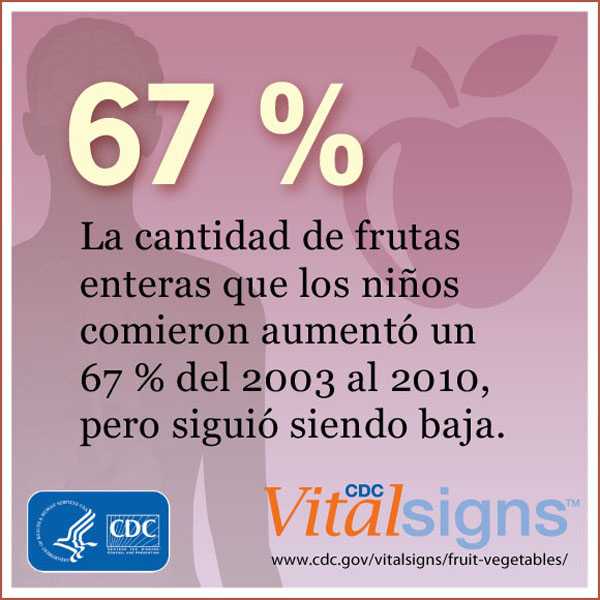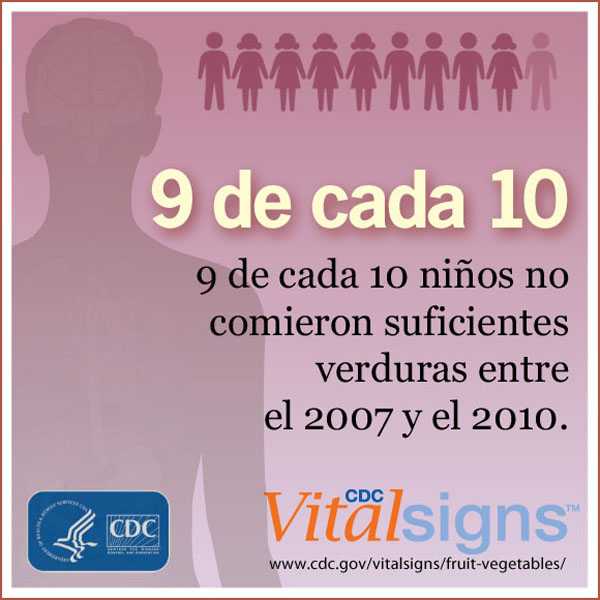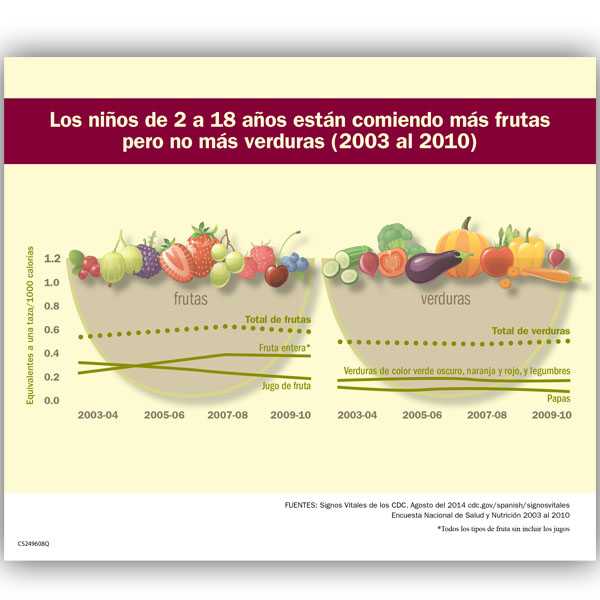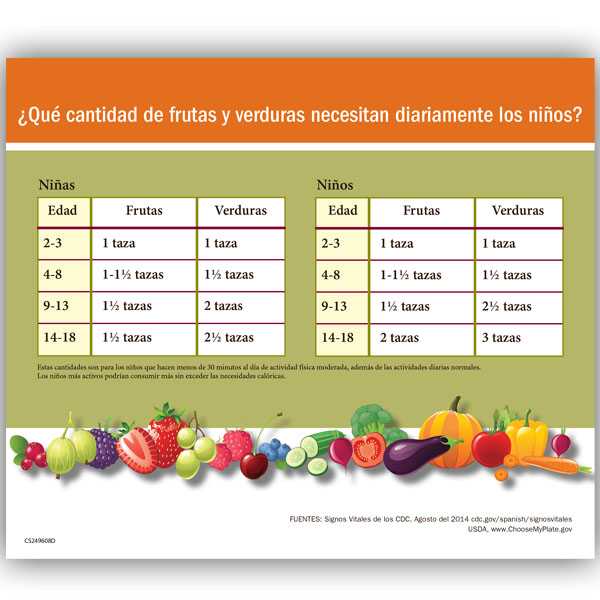Children Eating More Fruit, but Fruit and Vegetable Intake Still Too Low
Child care and schools can help children meet daily recommendations
Children in the U.S. ate 67% more whole fruit from 2003-2010, but the amount of vegetables they ate remained unchanged, according to the latest Vital Signs report by the Centers for Disease Control and Prevention. Also, from 2003-2010, children drank less juice, making whole fruit the main contributor of fruit to children’s diets, as recommended by experts. Though the findings about fruit are encouraging, children in the U.S. are still not eating the recommended amounts of fruits and vegetables. About 60 million children in the U.S. attend child care or school where the food they eat and the nutrition education they receive can affect their health and lifelong food choices. This Vital Signs report highlights ways child care providers and schools can help increase the amount of fruit and vegetables children eat each day. Child care, schools, and school districts can:
- Meet or exceed current federal nutrition standards for meals and snacks.
- Serve fruit and vegetables whenever food is offered.
- Train staff to make fruit and vegetables more appealing and accessible.
- Provide nutrition education and hands-on learning opportunities, such as growing, tasting, and preparing fruit and vegetables.
CDC funds state and local public health departments to support healthier food environments in child care settings and schools. At home, parents can encourage children to eat a variety of fruits and vegetables, even if it takes many tries. They can also help their children eat more of these foods by modeling healthy eating habits, providing fruit and vegetables as snacks instead of less healthy items, and including their children when shopping for, growing, and preparing fruits and vegetables.
Contact Information
Ileana Arias, PhD

“It’s great to learn that our children are eating more fruit and drinking less juice. Still, the amount of fruit and vegetables they eat is too low. We must continue to build upon these efforts to help ensure that children have every opportunity for healthy eating everywhere.”
Ileana Arias, PhD – Principal Deputy Director of the Centers for Disease Control and Prevention
Janet L. Collins, PhD

“Exposing children to fruits and vegetables in child care and at school can help shape their eating behavior beyond the classroom or cafeteria. Meeting and going beyond federal nutrition standards for meals and snacks is an important first step to do this. To support the standards, we also need to make sure children can learn about and try fruits and vegetables prepared in delicious, healthy ways throughout their day.”
Janet L. Collins, PhD – Director, Division of Nutrition, Physical Activity, and Obesity (DNPAO)National Center for Chronic Disease Prevention and Health Promotion
Sonia A. Kim, PhD

“Child care and schools are uniquely positioned to impact children’s fruit and vegetable intake and help create healthy habits that can last a lifetime. With so many opportunities throughout the day to include fruit and vegetables – healthy breakfasts, eating from the salad bar at lunch, learning in
the school garden – children are more likely to be interested in eating fruits and vegetables, even at home.”
Sonia A. Kim, PhD – Epidemiologist, Division of Nutrition, Physical Activity, and Obesity, National Center for Chronic Disease Prevention and Health Promotion
Related Links
- Press Release: Children eating more fruit, but fruit and vegetable intake still too low
- MMWR – Vital Signs: Fruit and Vegetable Intake Among Children — United States, 2003–2010 | [PDF-351.3KB]
- Vital Signs: Home | August 2014 Vital Signs | Factsheet [PDF-16.9MB] | Issues
- Vital Signs (Spanish): Home | Factsheet [PDF-3.22MB] | Issues
- Adolescent and School Health: Nutrition Facts
- CDC Guide to Strategies to Increase the Consumption of Fruits and Vegetables [PDF-2.06MB]
- Fruits and Vegetables
- School Health Guidelines to Promote Healthy Eating and Physical Activity
- CDC’s Overweight and Obesity-Strategies and Solutions for My Community
Child Care
- Healthy Kids, Healthy Future: Child Care
- National Resource Center for Health and Safety in Childcare and Early Education. Caring for Our Children
- USDA CACFP Food Service Management Child Care Resources
- USDA Team Nutrition Resource Library
Schools
- Salad Bars to Schools
- USDA Healthier School Day – “Tool for Schools” Toolkit
- Chefs Move to Schools
- HealthierUS School Challenge
- Nutrition Standards for School Meals
- Smart Snacks in School
- USDA Team Nutrition Resource Library
- USDA Farm to School Program
- USDA Fresh Fruit and Vegetable Program
Consumers
Podcasts
- Vital Signs – Children are eating more fruit, but not more vegetables: English | Spanish
- Vital Signs – Children are eating more fruit, but not more vegetables [PSA – 0:60
seconds]
- Page last reviewed: August 4, 2017
- Page last updated: August 10, 2017
- Content source:


 ShareCompartir
ShareCompartir
